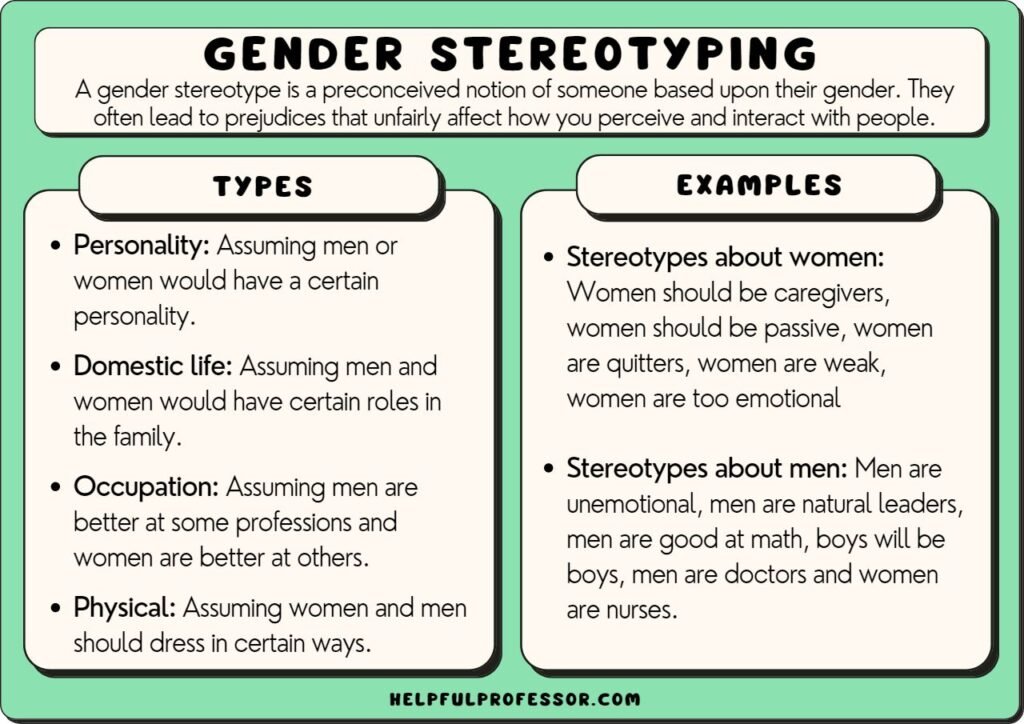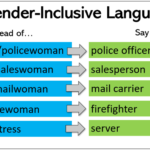How Gender Stereotypes Affect Personal and Professional Lives
Introduction
Gender stereotypes are preconceived notions about how individuals should behave based on their gender. These stereotypes can significantly impact both personal and professional lives, shaping opportunities, behavior, and interactions. Understanding the effects of gender stereotypes helps in addressing and mitigating their impact to foster a more equitable environment.

The Impact of Gender Stereotypes on Personal Lives
Shaping Self-Perception and Identity
Gender stereotypes influence how individuals perceive themselves and their capabilities:
- Self-Image: Stereotypes can limit individuals’ beliefs about their abilities and potential based on their gender.
- Behavioral Expectations: People often feel pressured to conform to stereotypical gender roles, which can restrict personal growth and self-expression.
Case Example: Gendered Expectations
Individuals might feel compelled to pursue careers or hobbies deemed “appropriate” for their gender, affecting their personal satisfaction and identity.
Affecting Relationships and Social Interactions
Stereotypes shape interactions and relationships, impacting personal connections:
- Relationship Dynamics: Gender stereotypes can influence expectations in relationships, affecting how individuals relate to partners and family members.
- Social Roles: Conforming to stereotypes can impact social interactions and limit the depth of personal relationships.
Case Example: Traditional Gender Roles
Adhering to traditional gender roles can create imbalances in household responsibilities and affect relationship dynamics.
The Impact of Gender Stereotypes on Professional Lives
Limiting Career Opportunities
Gender stereotypes affect career choices and advancement:
- Occupational Segregation: Stereotypes can lead to occupational segregation, where certain jobs are perceived as suitable for specific genders.
- Career Advancement: Women and non-binary individuals may face barriers to career advancement due to stereotypes about leadership and competence.
Case Example: Gender Bias in Hiring
Biases in hiring and promotion processes often result in fewer women and non-binary individuals in leadership positions.
Influencing Workplace Behavior
Stereotypes shape behavior and expectations in professional settings:
- Performance Expectations: Gender stereotypes can affect how individuals are evaluated and the expectations placed upon them.
- Leadership Styles: Women and non-binary individuals may face challenges in leadership roles due to stereotypes about their leadership abilities.
Case Example: Leadership Challenges
Women in leadership roles may encounter criticism for leadership styles that deviate from traditional masculine norms, impacting their effectiveness and career progression.
Addressing and Overcoming Gender Stereotypes
Promoting Awareness and Education
Education and awareness are crucial for challenging and overcoming gender stereotypes:
- Training Programs: Implement training programs to educate individuals about gender stereotypes and their impacts.
- Raising Awareness: Promote awareness campaigns that highlight the negative effects of gender stereotypes and encourage inclusive practices.
Case Example: Diversity Training
Organizations that offer diversity training help employees recognize and address their own biases and promote a more inclusive work environment.
Implementing Inclusive Policies and Practices
Organizations can reduce the impact of gender stereotypes by adopting inclusive policies:
- Inclusive Hiring Practices: Develop hiring and promotion practices that minimize bias and promote diversity.
- Supportive Work Environments: Create work environments that support and value diverse perspectives and experiences.
Case Example: Gender-Neutral Policies
Gender-neutral policies in recruitment and promotion processes can help mitigate biases and support a more diverse workforce.
Encouraging Open Dialogue and Feedback
Encouraging open dialogue about gender issues can help address stereotypes:
- Open Communication: Foster open communication about gender-related challenges and experiences.
- Feedback Mechanisms: Use feedback to identify areas where stereotypes may be impacting individuals and to develop strategies for improvement.
Case Example: Employee Resource Groups
Employee resource groups focused on gender diversity can provide support, raise awareness, and advocate for change within organizations.
Conclusion
Gender stereotypes have a profound impact on personal and professional lives, shaping self-perception, relationships, career opportunities, and workplace behavior. Addressing these stereotypes requires a concerted effort through education, inclusive policies, and open dialogue. By promoting awareness and implementing strategies to challenge stereotypes, individuals and organizations can create more equitable and supportive environments, allowing everyone to thrive regardless of gender.



